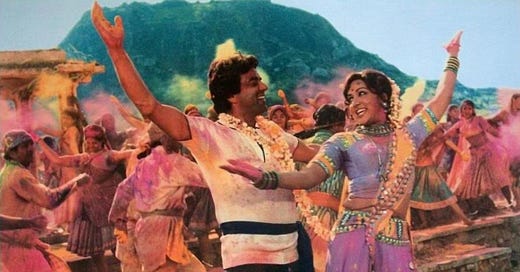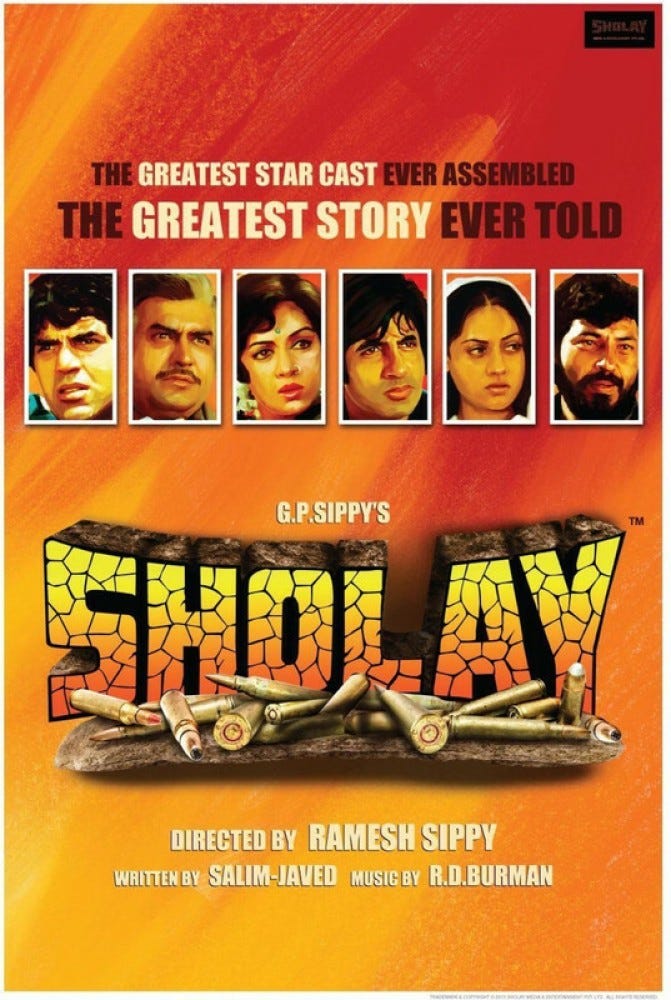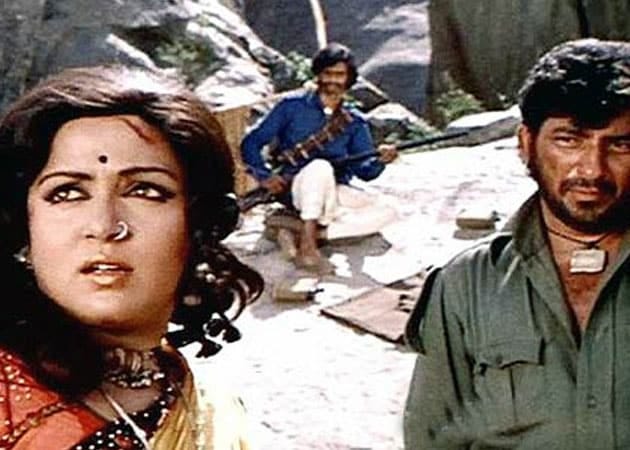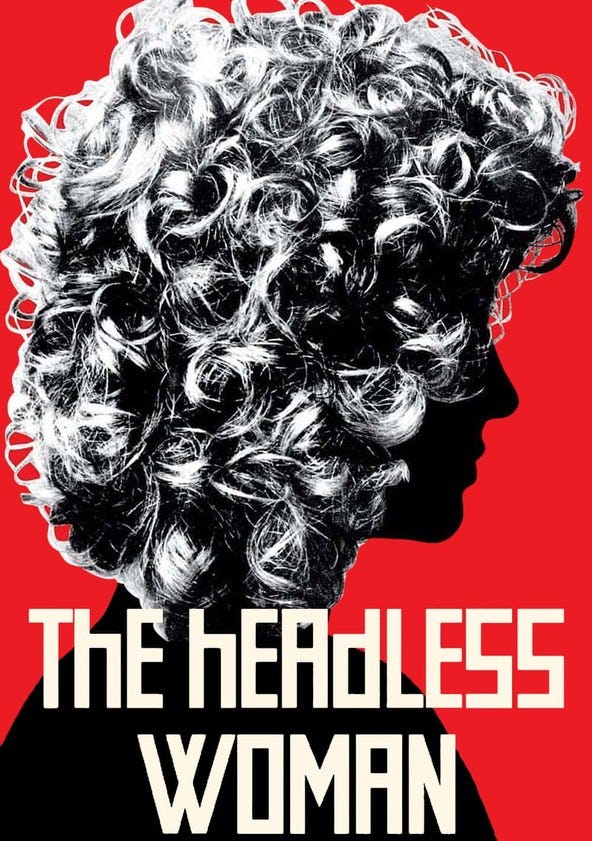Directed by Ramesh Sippy
India, 1975
One uses their feet to crush a snake Gabbar, not the hands - Thakur Baldev Singh
This week saw ReidsonFilm’s first foray into the world of Bollywood and Sholay is certainly maximum Bollywood. Nothing could have prepared us for the wild veering across genres: comedy, tragedy, farce, and romance. Something a fan of a certain Mr Shakespeare would immediately recognise and label as tragicomedy. The film’s poster makes the bold claim that Sholay has the greatest cast ever assembled for the greatest story ever told, and given the reaction to the film in India – it is still broadly considered the most popular film in the country’s history – it’s a claim made with genuine sincerity.
That mix of genres by the film’s writers, Javed Akhtar and Salim Khan, and director, Ramesh Sippy, mirrors the mixing of Indian spices that led to the label ‘masala movie’, a style that arose in Hindi films in the 1970s. Another surprise was the influence of the Spaghetti Western. Sholay gleefully riffs on Sergio Leone’s Once Upon a Time in the West and that Bank Holiday TV classic The Magnificent Seven. There are also nods to Chaplin’s The Great Dictator and The Wizard of Oz.
The film is set in the rugged mountain landscape of rural India. Two small-time crooks, Veeru and Jai, are released from prison by a retired police inspector, Thakur Baldev Singh (Sanjeev Kumar), to protect his village in Ramgarh. But also, and importantly, to capture a bandit, Gabbar Singh, who has been terrorising the village in the manner of Eli Wallach’s marauding Mexican bandits from The Magnificent Seven. A number of flashbacks fill out the backstory of Veeru, Jai, Thakur, and even Gabbar Singh before we leap forward to the present where amidst a panoply of gunfire, melodrama, breath-taking action sequences, and set piece musical numbers, our heroes will find love and death.
The action begins with an impressively filmed and edited attempt at a train robbery that rivals the best of Leone’s stable of Westerns. Then the narrative follows what at times feels like a sequence of short films stitched together, and not necessarily in the right order. That fits with the mashup style, though there are a few longueurs in a film of over 200 minutes duration – yes, a 3½ hour running time. Yet Sholay doesn’t outstay its welcome.
Thrills, fun characters, a simple plot…crash zooms, off-speed shots, extreme wides of landscape - N
Unsurprisingly the song and dance sequences are vibrant and captivatingly choreographed, reaching a height with a spectacular Holi festival. The soundtrack, courtesy of R.D. Burnham blends fragments of classical music, folk, and popular song, and with its use of character motifs brings a balance and cohesion to the film that leads you through the narrative maze. And there are showstoppers aplenty: one highlight is the emotional expressivity of an operatic scene where one of the village women dances over glass to save the life of her lover.
Where Sholay excels though is in the transformation of stock movie characters into personalities with depth and pathos, from Veeru and Jai, played by Dharmendra and Amitabh Bachchan – two of Indian cinema’s greatest ever film stars – here sporting anachronistic leather jackets, to the effervescent and feisty cart driver Basanti (Hema Malini), and of course the rotten-toothed villain Gabbar Singh (Amjad Khan). These players share a complexity, often riven with competing emotions, that to reference Shakespeare again, holds a mirror to nature.
Oh yeah, for god’s sake someone please give them a tripod…the camera couldn’t sit still, it was shaking all over the place - C
There is an outlandish climax that brings to mind Joy Crookes’ recent hit song, Feet Don’t Fail Me Now, but Sholay is overwhelmingly a film full of exuberance, grabbing at life. We suspect that there were cultural references and subtitle-garbled lines that flew straight over our heads, and you can imagine this film playing to an audience that recites the lines by heart and sings along with all of the songs. For us, it was definitely ‘a very palpable hit’ and Bollywood, we will be back…
Reids’ Results (out of 100)
C - 70
T - 73
N - 73
S - 78
Thank you for reading Reids on Film. If you enjoyed our review please share with a friend, and do give us a shout here with a comment.
Coming next… The Headless Woman(2008)








